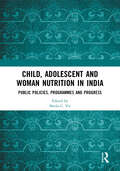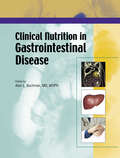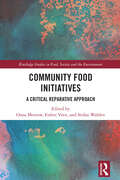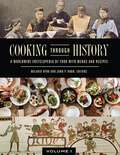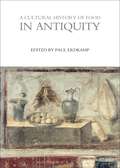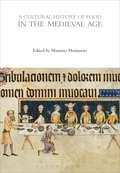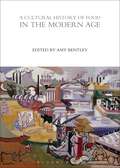- Table View
- List View
Cacao fruit (Cross-section) (UEB Uncontracted)
This is a labelled image of a cacao fruit in longitudinal cross section (cut through from top to bottom). This fruit is the source of cocoa beans, from which chocolate products are made. There is a locator dot shown, which will be at the top left of the page when the image is the correct way up. The image of the cacao fruit is in the middle of the page. At its centre is a cavity filled with white pulp and cocoa beans (seeds), which are also white and light brown, and only change to their familiar very dark brown colour after processing. The hard, leathery rind or skin is ridged and is up to three centimetres thick. The fruit is between fifteen and thirty centimetres long.
Cantaloupe Melon (Cross-section) (Large Print)
This is a labelled image of a cantaloupe melon shown in longitudinal cross section (cut through from top to bottom). There is a locator dot shown, which will be at the top left of the page when the image is the correct way up. The image of the cantaloupe melon fills the page. At its centre is a cavity filled with seeds. Surrounding this is the sweet and juicy flesh and thick rind-like skin of the fruit. The cantaloupe is about fifteen to twenty centimetres in length. Its skin is a dull beige grey colour but the flesh inside is a delicate pink orange.
Cantaloupe Melon (Cross-section) (UEB Contracted)
This is a labelled image of a cantaloupe melon shown in longitudinal cross section (cut through from top to bottom). There is a locator dot shown, which will be at the top left of the page when the image is the correct way up. The image of the cantaloupe melon fills the page. At its centre is a cavity filled with seeds. Surrounding this is the sweet and juicy flesh and thick rind-like skin of the fruit. The cantaloupe is about fifteen to twenty centimetres in length. Its skin is a dull beige grey colour but the flesh inside is a delicate pink orange.
Cantaloupe Melon (Cross-section) (UEB Uncontracted)
This is a labelled image of a cantaloupe melon shown in longitudinal cross section (cut through from top to bottom). There is a locator dot shown, which will be at the top left of the page when the image is the correct way up. The image of the cantaloupe melon fills the page. At its centre is a cavity filled with seeds. Surrounding this is the sweet and juicy flesh and thick rind-like skin of the fruit. The cantaloupe is about fifteen to twenty centimetres in length. Its skin is a dull beige grey colour but the flesh inside is a delicate pink orange.
Carrot (Large Print)
This image of a carrot fills the centre of the page. There is a locator dot shown, which will be at the top left of the page when the image is the correct way up. The carrot has a swollen taproot (main root), which is the part of the plant usually eaten, although the green leaves are edible and tasty. The root is sweet and crunchy. The carrots shoots and feathery leaves fill the top part of the page. They join the taproot in the centre of the page. The taproot of the carrot is usually coloured orange but some varieties are white or purple. It is fat at the top and tapers to a point at the bottom of the page. There are fine root hairs attached to the taproot through which the plant draws nutrition from the soil.
Carrot (UEB Contracted)
This image of a carrot fills the centre of the page. There is a locator dot shown, which will be at the top left of the page when the image is the correct way up. The carrot has a swollen taproot (main root), which is the part of the plant usually eaten, although the green leaves are edible and tasty. The root is sweet and crunchy. The carrots shoots and feathery leaves fill the top part of the page. They join the taproot in the centre of the page. The taproot of the carrot is usually coloured orange but some varieties are white or purple. It is fat at the top and tapers to a point at the bottom of the page. There are fine root hairs attached to the taproot through which the plant draws nutrition from the soil.
Carrot (UEB Uncontracted)
This image of a carrot fills the centre of the page. There is a locator dot shown, which will be at the top left of the page when the image is the correct way up. The carrot has a swollen taproot (main root), which is the part of the plant usually eaten, although the green leaves are edible and tasty. The root is sweet and crunchy. The carrots shoots and feathery leaves fill the top part of the page. They join the taproot in the centre of the page. The taproot of the carrot is usually coloured orange but some varieties are white or purple. It is fat at the top and tapers to a point at the bottom of the page. There are fine root hairs attached to the taproot through which the plant draws nutrition from the soil.
Cauliflower (Large Print)
This image of a cauliflower fills the centre of the page. There is a locator dot shown, which will be at the top left of the page when the image is the correct way up. This vegetable is in fact a highly modified flower. It is a member of the Brassicaceae family, which includes cabbage, sprouts, broccoli and kale. The head (or curd) of the cauliflower is at the top of the image; it has a lumpy texture and is a creamy white in colour. Down the page are the thick green leaves with their thick, lighter-coloured veins spreading out from the cauliflower's stalk at the bottom of the image.
Cauliflower (UEB Contracted)
This image of a cauliflower fills the centre of the page. There is a locator dot shown, which will be at the top left of the page when the image is the correct way up. This vegetable is in fact a highly modified flower. It is a member of the Brassicaceae family, which includes cabbage, sprouts, broccoli and kale. The head (or curd) of the cauliflower is at the top of the image; it has a lumpy texture and is a creamy white in colour. Down the page are the thick green leaves with their thick, lighter-coloured veins spreading out from the cauliflower's stalk at the bottom of the image.
Cauliflower (UEB Uncontracted)
This image of a cauliflower fills the centre of the page. There is a locator dot shown, which will be at the top left of the page when the image is the correct way up. This vegetable is in fact a highly modified flower. It is a member of the Brassicaceae family, which includes cabbage, sprouts, broccoli and kale. The head (or curd) of the cauliflower is at the top of the image; it has a lumpy texture and is a creamy white in colour. Down the page are the thick green leaves with their thick, lighter-coloured veins spreading out from the cauliflower's stalk at the bottom of the image.
Cherries (Large Print)
This page shows an image of two cherries joined by their stalks, and a leaf. They are slightly larger than life-size. There is a locator dot shown, which will be at the top left of the page when the image is the correct way up.Just to the right of centre you can find the leaf with its pattern of veins. To the left of this, the two stalks curve down to the fat, sweet red cherries nearer the bottom of the page.
Cherries (UEB Contracted)
This page shows an image of two cherries joined by their stalks, and a leaf. They are slightly larger than life-size. There is a locator dot shown, which will be at the top left of the page when the image is the correct way up.Just to the right of centre you can find the leaf with its pattern of veins. To the left of this, the two stalks curve down to the fat, sweet red cherries nearer the bottom of the page.
Cherries (UEB Uncontracted)
This page shows an image of two cherries joined by their stalks, and a leaf. They are slightly larger than life-size. There is a locator dot shown, which will be at the top left of the page when the image is the correct way up.Just to the right of centre you can find the leaf with its pattern of veins. To the left of this, the two stalks curve down to the fat, sweet red cherries nearer the bottom of the page.
Child, Adolescent and Woman Nutrition in India: Public Policies, Programmes and Progress
In the last decade, addressing the persistent problem of maternal, infant, young child and adolescent malnutrition in India has gained significant attention. With the well-established serious implications of malnutrition on mortality and morbidity; mental health and cognitive development; activity and productivity and overall economic development, today there is an unprecedented political commitment to improving the grave woman and child nutrition scenario in the country. POSHAN ABHIYAAN (Nutrition Mission) was launched in a Mission mode by the Honourable Prime Minister of India on March 8, 2018, followed by measures for an effective implementation of an integrated nutrition strategy through POSHAN 2.0 in 2022. The book with 15 chapters tracks the history of evolvement of public nutrition policies and strategies, presents an update on the nutrition scenario, analyses the experiences and synthesises emerging lessons in the prevention and control of malnutrition. Additionally, the book includes chapters with details of each of the various government systems such as Health, ICDS, NRLM, PDS, Education/MDM, Water-Sanitation that provide lead in mainstreaming nutrition actions that directly or indirectly impact on accelerating the improvement of the nutrition situation of women, adolescents and children. The book is intended to be an indispensable reference for teachers and students of nutrition, community medicine, public health and development as well as professionals involved in the formulation and implementation of the nutrition policies and programmes. Print edition not for sale in South Asia (India, Sri Lanka, Nepal, Bangladesh, Pakistan and Bhutan)
Clinical Nutrition in Gastrointestinal Disease
Nutrition has been identified as one of the most neglected, but important aspects of gastroenterology. Clinical Nutrition in Gastrointestinal Disease covers all of the vital aspects of nutrition and serves as the definitive resource on this topic.Dr. Alan Buchman has teamed up with more than 70 world renowned leaders in the field to provide today’s professional specializing in gastrointestinal disease with a practical guide that examines and explains the necessary elements and principles of nutrition. With more than 100 images and 180 tables, Clinical Nutrition in Gastrointestinal Disease contains essential information to optimally and successfully manage pediatric and adult patients.Some Topics Covered Include: Nutritional assessment Nutrition in critical care Nutritional support Management of intestinal failure Obesity Pediatrics Probiotics Nutrient absorption Metabolism Home care Some Gastrointestinal Diseases Covered Include: Inflammatory bowel disease Irritable bowel syndrome Colon cancer Pancreatititis Heptatic failure Celiac sprue Clinical Nutrition in Gastrointestinal Disease delivers the latest information in a comprehensive and well-organized format that is perfect for gastroenterologists, general surgeons, and general internists looking to increase their knowledge of clinical nutrition. The extensive use of images, graphs, and tables compliments the text and makes this one of the most authoritative and thorough books on gastrointestinal disease currently on the market.
Community Food Initiatives: A Critical Reparative Approach (Routledge Studies in Food, Society and the Environment)
This book examines a diverse range of community food initiatives in light of their everyday practices, innovations, and contestations. While community food initiatives aim to tackle issues like food security, food waste, or food poverty, it is a cause for concern for many when they are framed as the next big "solution" to the problems of the current industrialised food system. They have been critiqued for being too neoliberal, elitist, and localist; for not challenging structural inequalities (e.g. racism, privilege, exclusion, colonialism, capitalism); and for reproducing these inequalities within their own contexts. This edited volume examines the everyday realities of community food initiatives, focusing on both their hopes and their troubles, their limitations and failures, but also their best intentions, missions, and models, alongside their capacity to create hope in difficult times. The stories presented in this book are grounded in contemporary theoretical debates on neoliberalism, diverse economies, food justice, community and inclusion, and social innovation, and help to sharpen these as conceptual tools for interrogating community food initiatives as sites of both hope and trouble. The novelty of this volume is its focus on the everyday doings of these initiatives in particular places and contexts, with different constraints and opportunities. This grounded, relational, and place-based approach allows us to move beyond more traditional framings in which community food initiatives are either applauded for their potential or criticized for their limitations. It enables researchers and practitioners to explore how community food initiatives can realize their potential for creating alternative food futures and generates innovative pathways for theorising the mutual interplay of food production and consumption. This volume will be of great interest to students and scholars of critical food studies, food security, public health, and nutrition as well as human geographers, sociologists, and anthropologists with an interest in food.
Cooking through History [2 volumes]: A Worldwide Encyclopedia of Food with Menus and Recipes [2 volumes]
From the prehistoric era to the present, food culture has helped to define civilizations. This reference surveys food culture and cooking from antiquity to the modern era, providing background information along with menus and recipes.Food culture has been central to world civilizations since prehistory. While early societies were limited in terms of their resources and cooking technology, methods of food preparation have flourished throughout history, with food central to social gatherings, celebrations, religious functions, and other aspects of daily life. This book surveys the history of cooking from the ancient world through the modern era.The first volume looks at the history of cooking from antiquity through the Early Modern era, while the second focuses on the modern world. Each volume includes a chronology, historical introduction, and topical chapters on foodstuffs, food preparation, eating habits, and other subjects. Sections on particular civilizations follow, with each section offering a historical overview, recipes, menus, primary source documents, and suggestions for further reading. The work closes with a selected, general bibliography of resources suitable for student research.
Courgette (Large Print)
This is an image of a green courgette, sometimes known as zucchini, in the middle of the page. There is a locator dot shown, which will be at the top left of the page when the image is the correct way up. The courgette's stalk is in the top left of the page, the main body of the fruit extends down and right to the little bump on the end of the fruit where the flower was once attached. There are lines on the image that represent slight ridges that run the length of the courgette.
Courgette (UEB Contracted)
This is an image of a green courgette, sometimes known as zucchini, in the middle of the page. There is a locator dot shown, which will be at the top left of the page when the image is the correct way up. The courgette's stalk is in the top left of the page, the main body of the fruit extends down and right to the little bump on the end of the fruit where the flower was once attached. There are lines on the image that represent slight ridges that run the length of the courgette.
Courgette (UEB Uncontracted)
This is an image of a green courgette, sometimes known as zucchini, in the middle of the page. There is a locator dot shown, which will be at the top left of the page when the image is the correct way up. The courgette's stalk is in the top left of the page, the main body of the fruit extends down and right to the little bump on the end of the fruit where the flower was once attached. There are lines on the image that represent slight ridges that run the length of the courgette.
A Cultural History of Food in Antiquity (The Cultural Histories Series)
From Archaic Greece until the Late Roman Empire (c. 800 BCE to c. 500 CE), food was more than a physical necessity; it was a critical factor in politics, economics and culture. On the one hand, the Mediterranean landscape and climate encouraged particular crops – notably cereals, vines and olives – but, with the risks of crop failure ever-present, control of food resources was vital to economic and political power. On the other hand, diet and dining reflected complex social hierarchies and relationships. What was eaten, with whom and when was a fundamental part of the expression of one's role and place in society. In addition, symbolism and ritual suffused foodstuffs, their preparation and consumption.A Cultural History of Food in Antiquity presents an overview of the period with essays on food production, food systems, food security, safety and crises, food and politics, eating out, professional cooking, kitchens and service work, family and domesticity, body and soul, representations of food, and developments in food production and consumption globally.
A Cultural History of Food in the Age of Empire (The Cultural Histories Series)
The nineteenth-century West saw extraordinary economic growth and cultural change. This volume explores and explains the birth of the modern world through the food it produced and consumed. Food security vastly improved though malnutrition and famines persisted. Scientific research radically altered the ways in which food and its relation to the body were conceived: efficiency became the watchword, norms the measure, and standardized goods the rule. At the same time, the art of food became a luxury pursuit as interest in gastronomy soared.A Cultural History of Food in the Age of Empire presents an overview of the period with essays on food production, food systems, food security, safety and crises, food and politics, eating out, professional cooking, kitchens and service work, family and domesticity, body and soul, representations of food, and developments in food production and consumption globally.
A Cultural History of Food in the Early Modern Age (The Cultural Histories Series)
The seventeenth and eighteenth centuries form a very distinctive period in European food history. This was a time when enduring feudal constraints in some areas contrasted with widening geographical horizons and the emergence of a consumer society.While cereal based diets and small scale trade continued to be the mainstay of the general population, elite tastes shifted from Renaissance opulence toward the greater simplicity and elegance of dining à la française. At the same time, growing spatial mobility and urbanization boosted the demand for professional cooking and commercial catering. An unprecedented wealth of artistic, literary and medical discourses on food and drink allows fascinating insights into contemporary responses to these transformations.A Cultural History of Food in the Early Modern Age presents an overview of the period with essays on food production, food systems, food security, safety and crises, food and politics, eating out, professional cooking, kitchens and service work, family and domesticity, body and soul, representations of food, and developments in food production and consumption globally.
A Cultural History of Food in the Medieval Age (The Cultural Histories Series)
Europe was formed in the Middle Ages. The merging of the traditions of Roman-Mediterranean societies with the customs of Northern Europe created new political, economic, social and religious structures and practices. Between 500 and 1300 CE, food in all its manifestations, from agriculture to symbol, became ever more complex and integral to Europe's culture and economy. The period saw the growth of culinary literature, the introduction of new spices and cuisines as a result of trade and war, the impact of the Black Death on food resources, the widening gap between what was eaten by the rich and what by the poor, as well as the influence of religion on food rituals.A Cultural History of Food in the Medieval Age presents an overview of the period with essays on food production, food systems, food security, safety and crises, food and politics, eating out, professional cooking, kitchens and service work, family and domesticity, body and soul, representations of food, and developments in food production and consumption globally.
A Cultural History of Food in the Modern Age (The Cultural Histories Series)
In the modern age (1920–2000), vast technological innovation spurred greater concentration, standardization, and globalization of the food supply. As advances in agricultural production in the post-World War II era propelled population growth, a significant portion of the population gained access to cheap, industrially produced food while significant numbers remained mired in hunger and malnutrition. Further, as globalization allowed unprecedented access to foods from all parts of the globe, it also hastened environmental degradation, contributed to poor health, and remained a keyelement in global politics, economics and culture.A Cultural History of Food in the Modern Age presents an overview of the period with essays on food production, food systems, food security, safety and crises, food and politics, eating out, professional cooking, kitchens and service work, family and domesticity, body and soul, representations of food, and developments in food production and consumption globally.

